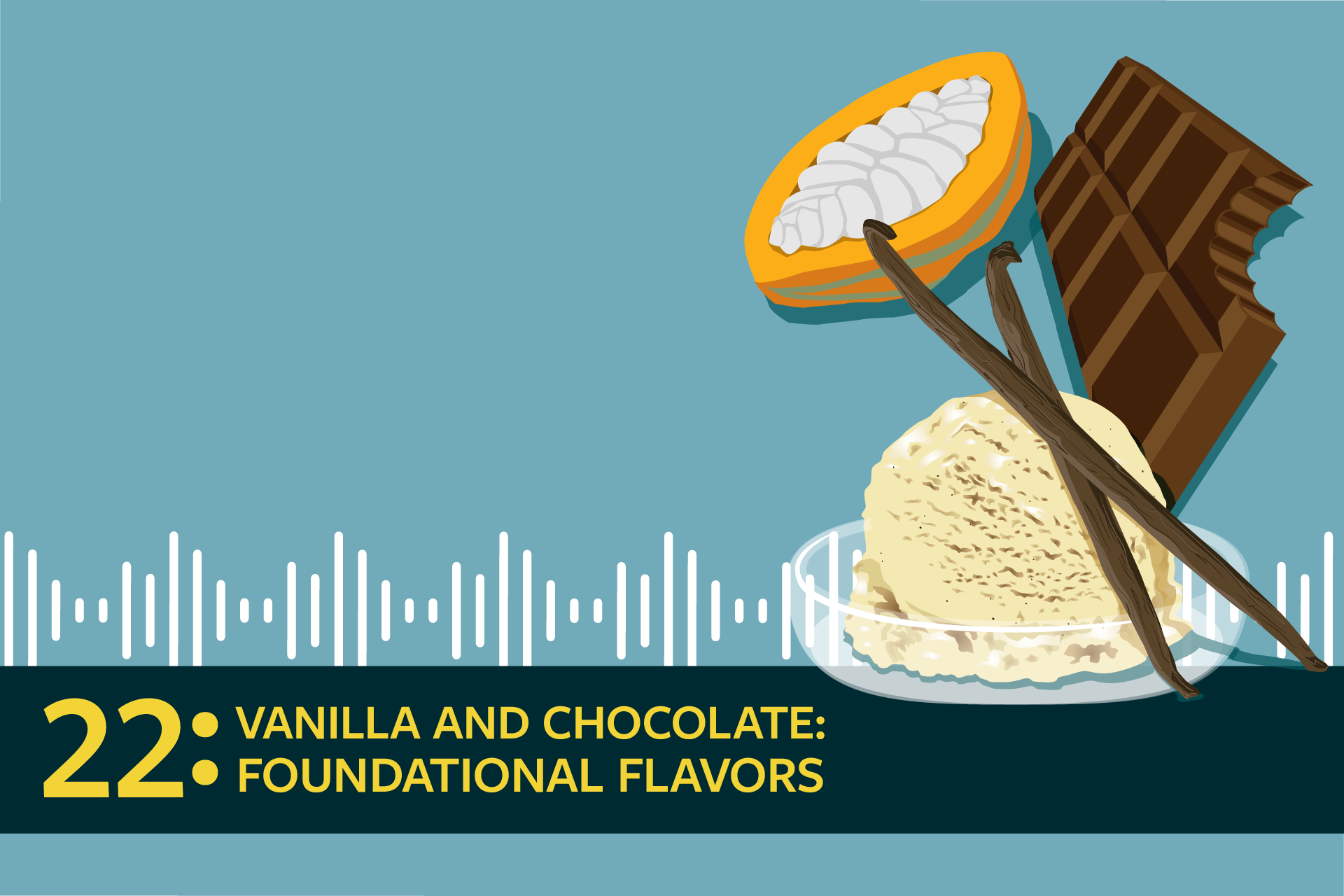Is a sweeter story possible for chocolate and vanilla?
As you walk up and down the grocery aisles, you’ll see chocolate and vanilla all around you — in cookies, yogurt, puddings, ice cream, soda and more. These flavors are so close to us, such a part of our understanding of our edible world, that we don’t even take proper notice of them sometimes. (Consider that fragrant, multilayered vanilla has somehow become synonymous with “bland” or “boring.”) In fact, vanilla and chocolate have almost become flavors more than foods: We have erased their identities, flattening them into single notes. And in doing so, we have made it easy to forget that they are real ingredients produced by real people — connected to each other and to the problems of our broader food system.
In our latest podcast episode we stop to look more closely at vanilla and chocolate, which start out as beans and pods, respectively, grown in the Global South before making long journeys north to be processed, sold and profited from. Large flavoring companies extract wealth from the communities that produce these ingredients, a system that leaves smallholder farmers in poverty and leads to environmental and social problems like deforestation and forced and child labor.
Some companies are trying to create alternative models that keep profits from chocolate and vanilla in the communities that grow them. In the episode, we talk to two of them: Heilala Vanilla and Beyond Good. We also hear from a lawyer from Corporate Accountability Lab who explains how child labor became a problem in these industries and how we can hold companies accountable for abuses in their supply chains.
Is it possible to reconnect these flavors to the foods they come from? And can we do more to ensure the people who grow vanilla beans and cacao pods can benefit from the essential role these flavors play in the way we eat? Listen to learn more.
Get the latest food news from FoodPrint.
By subscribing to communications from FoodPrint, you are agreeing to receive emails from us. We promise not to email you too often or sell your information.
Top photo by Mara Zemgaliete/Adobe Stock.
More Reading
Everyone's talking about ultraprocessed foods — but what exactly are they?
June 27, 2024
Switching from beef to chicken isn't the sustainability flex you think it is
June 12, 2024
Are natural flavors better than artificial?
May 7, 2024
The ins and outs of vegan hot dogs
April 16, 2024
Jamie Loftus and ‘the naked truth about hot dogs’
April 16, 2024
Nearly a year after USDA approval, lab meat is still off the menu
April 10, 2024
Sourcing more sustainable flowers
March 27, 2024
‘Barons’ author Austin Frerick explains why so few companies control so much of our food
March 21, 2024
How a Kroger-Albertsons merger could affect grocery prices
March 6, 2024

